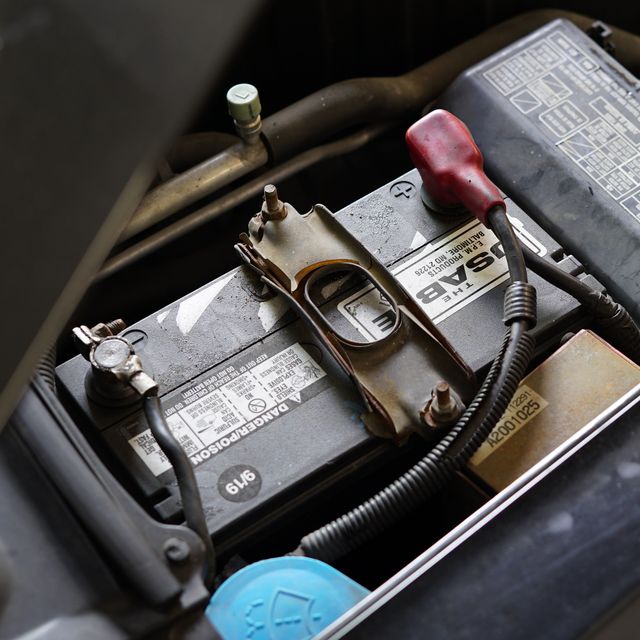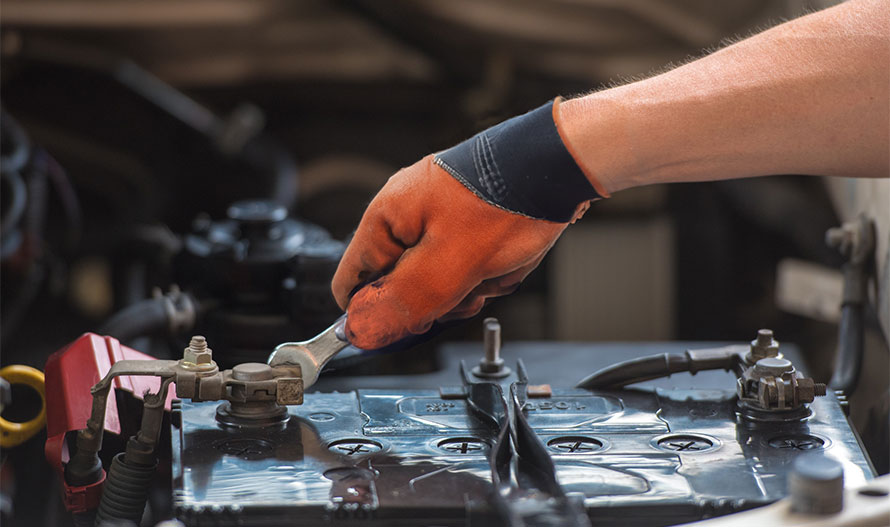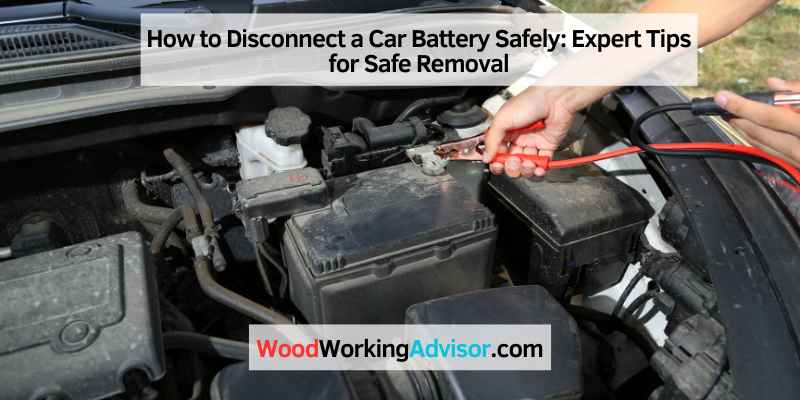To disconnect a car battery safely, first, turn off the engine and all electrical devices. Then, use a wrench to loosen the nut on the negative terminal, followed by the positive terminal.
You are then ready to carefully remove the battery from the vehicle. Disconnecting a car battery safely is essential for maintenance or replacement. By following the proper steps, you can avoid injury and prevent electrical damage to the vehicle. We will guide you through the process of safely disconnecting your car battery, ensuring that you can perform this task with confidence and ease.
Whether you are a car enthusiast or simply need to replace your battery, understanding the correct procedure is vital. Let’s delve into the steps and precautions to ensure a safe and successful disconnection of your car battery.
Why Disconnect A Car Battery?
There are crucial reasons why you might need to disconnect your car battery safely.
Prevent Electrical Accidents
Disconnecting the battery prevents accidental electrical shorts or shock risks.
Avoid Battery Drain
Disconnecting helps prevent battery drain when the vehicle is idle for extended periods.
Perform Maintenance Or Repairs
It is crucial for safe conducting maintenance or repair works on the vehicle.

Credit: www.roadandtrack.com
Preparing For Battery Disconnection
To safely disconnect a car battery, first, turn off the vehicle and locate the negative terminal. Loosen the nut securing the cable, disconnect it, then repeat the process for the positive terminal. Be cautious of any sparks and wear protective gloves throughout the procedure.
Gather Necessary Tools
- Open the car hood
- Find necessary tools:
- Socket wrench
- Adjustable wrench
- Terminal cleaning tool
- Safety goggles
- Rubber gloves
Put On Safety Gear
- Prioritize safety, put on goggles and gloves
Locate The Battery
- Front of the engine bay
- Look for a rectangular box with two cables attached
Identify Positive And Negative Terminals
- Positive Terminal: Marked with a “+” sign or red color
- Negative Terminal: Marked with a “-” sign or black color
Steps To Safely Disconnect A Car Battery
To safely disconnect a car battery, start by turning off the vehicle and removing any metal jewelry. Then, carefully undo the negative terminal before proceeding to the positive terminal. Use a wrench to loosen the nuts and gently lift the cables away from the battery.
Remember to always follow the manufacturer’s instructions and wear protective gear.
Turn Off The Engine
Before you begin the process of disconnecting your car battery, it’s important to turn off the engine. This not only prevents any accidental start-ups but also ensures your safety throughout the process.
Open The Hood
To access the battery, you’ll need to open the hood of your car. Locate the hood release lever, usually found under the dashboard on the driver’s side, and pull it to pop the hood open. Then, lift the hood and prop it securely with the provided rod or latch.
Disconnect The Negative Terminal
Identify the negative terminal, which is usually marked with a “-” symbol or the letters “NEG” or “N.” Using a wrench or pliers, loosen the nut or bolt securing the negative terminal cable to the battery. Once loosened, carefully remove the cable from the battery, ensuring it doesn’t come into contact with any metal parts.
Disconnect The Positive Terminal
Now it’s time to disconnect the positive terminal. Look for the positive terminal, which is typically labeled with a “+” symbol or the letters “POS” or “P.” Using the appropriate tool, loosen the nut or bolt securing the positive terminal cable and remove it from the battery, being cautious not to touch any metal surfaces.
Secure Loose Wires
After disconnecting both terminals, it’s crucial to secure any loose wires. You can use zip ties or electrical tape to organize and fasten the cables to prevent them from dangling or getting entangled with other engine components.
Store The Battery Safely
If you’re removing the battery entirely, make sure to store it in a safe place. Keep it away from flammable materials and extreme temperatures to avoid any potential hazards. Additionally, remember to recycle the old battery properly at a designated facility to protect the environment.
Tips For Added Safety
If you’re planning to disconnect your car battery, here are some added safety tips to keep in mind before proceeding:
Clean Battery Terminals
Before starting this process, make sure to clean the battery terminals. This will help to ensure a proper connection when you reconnect the battery. Remove any corrosion using a battery cleaning solution and a wire brush.
Inspect The Battery
Carefully inspect the battery for any signs of damage or leaks. It’s crucial to address any issues before proceeding with the disconnection. If you notice any damage or leaks, it’s best to seek professional assistance.
Label Terminals
To prevent confusion, label the positive and negative terminals of the battery. This will make it easier to reconnect the battery correctly once the disconnection is complete.
Take Photos For Reference
Before disconnecting the battery, it’s recommended to take photos of the current setup. This will serve as a reference when reconnecting the battery later.
What To Do After Battery Disconnection
After safely disconnecting a car battery, you need to follow the correct steps to ensure a smooth process. There are several important tasks to complete after disconnecting a car battery, such as disposing of the old battery, installing a new battery, resetting the clock and radio settings, and performing a battery voltage test.
Dispose Of Old Battery Properly
When disposing of the old car battery, it is important to follow the local regulations for hazardous waste disposal. You can take it to a recycling center or an auto parts store that accepts used batteries. Make sure to handle the battery carefully and avoid contact with the terminals.
Install A New Battery Correctly
After disposing of the old battery, you can install the new battery by first attaching the positive and negative terminals securely. Ensure that the terminals are tightened and the battery is properly seated in place. Refer to the car’s manual for specific instructions on installing the new battery.
Reset Clock And Radio Settings
After installing the new battery, make sure to reset the clock and radio settings in the car. This can be done using the car’s user manual to navigate through the settings and input the correct time and radio stations. It’s important to ensure that all settings are adjusted according to your preferences.
Perform Battery Voltage Test
Once the new battery is installed and everything is set up, it’s essential to perform a battery voltage test to ensure that the new battery is functioning properly. Use a multimeter to measure the voltage, and make sure it is within the acceptable range for the specific car battery model. If the voltage is low, there may be an issue with the installation or the battery itself.
Common Mistakes To Avoid
When it comes to disconnecting a car battery safely, there are a few common mistakes that you should avoid to ensure the process goes smoothly. By avoiding these mistakes, you can minimize the risk of damaging your vehicle or injuring yourself. In this section, we will discuss the most common mistakes that people make when disconnecting a car battery and provide tips on how to avoid them. So let’s dive in!
Removing The Positive Terminal First
One of the most common mistakes that people make when disconnecting a car battery is removing the positive terminal first. This can be a costly mistake as it can cause a short circuit, damage your vehicle’s electrical system, or even result in injury. To avoid this, always remember to remove the negative terminal first.
Using Incorrect Tools
Using incorrect tools can also lead to problems when disconnecting a car battery. It’s crucial to use the right tools for the job to prevent damage to the battery, terminals, or other components. Avoid using tools that are too big or too small as they can strip or damage the battery terminals. Instead, opt for a wrench or socket of the correct size for a secure fit.
Failing To Secure Loose Wires
Another mistake to avoid is failing to secure loose wires after disconnecting the battery. When removing the terminals, it’s essential to ensure that the wires are securely tucked away and not at risk of touching other metal components. Loose wires can lead to accidental contact, short circuits, or electrical fires. Take a moment to inspect the wires and use zip ties or tape to secure them in place, away from any metal parts.
Improperly Storing The Battery
Lastly, improper battery storage can also cause unnecessary damage. If you need to remove the battery for storage or replacement, make sure to keep it in a cool, dry place away from direct sunlight. It’s best to place it on a stable surface to prevent any accidental tipping or damage. Additionally, avoid placing the battery on a cold surface, as extreme temperatures can affect its performance.
When To Seek Professional Help
Lack Of Knowledge Or Experience
If you lack car battery expertise, go to professionals for assistance.
Dealing With Complex Electrical Systems
Complex electrical systems require skillful hands – consult an expert.
Uncertain Battery Condition
For unknown battery condition, wise to involve a professional mechanic.

Credit: www.interstatebatteries.com
Conclusion
Disconnecting a car battery safely is a crucial skill every car owner should possess. By following the correct procedures, you can avoid potential hazards and ensure the battery removal process goes smoothly. Remember to always wear protective gear, switch off the engine, and take caution when handling the battery terminals.
Regular maintenance and proper battery handling contribute to overall vehicle safety and longevity. Stay informed and prioritize safety when working with car batteries to ensure a hassle-free experience.


